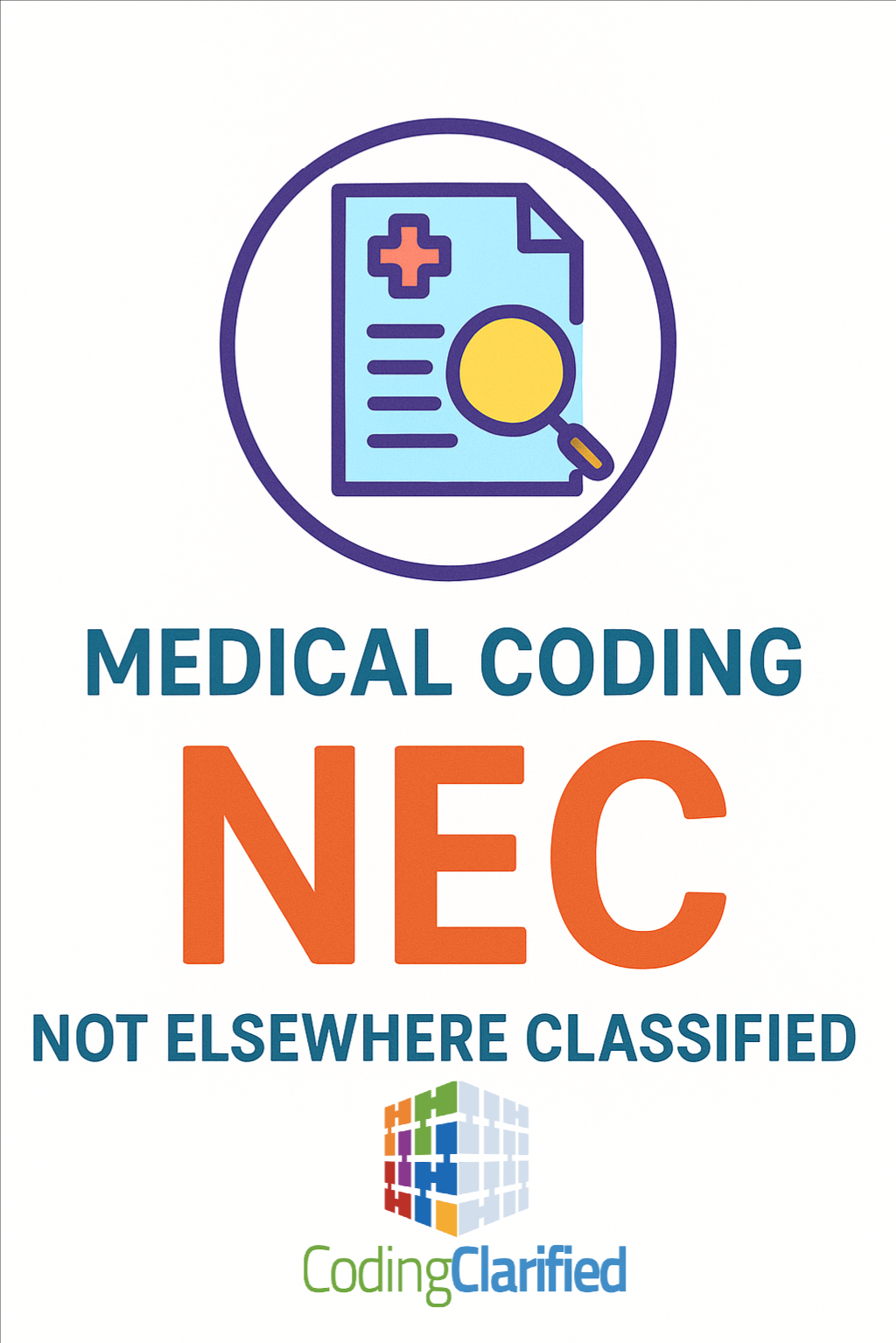Billing and Medical Coding Not Elsewhere Classified (NEC) Medical Codes
Medical coders frequently encounter Medical Coding “Not Elsewhere Classified” (NEC) codes in the ICD-10-CM, CPT®, or HCPCS coding systems. While these codes can seem confusing at first glance, they serve a very specific purpose in the world of clinical documentation and reimbursement. Proper use of NEC codes ensures accurate billing, minimizes claim denials, and reflects the reality of patient care when no more specific code exists.
What Does “NEC” Mean?
“Not Elsewhere Classified” (NEC) is used when:
-
The provider documents a condition or service in sufficient detail,
-
But the coding classification system does not provide a more specific code option.
In other words, NEC is a “catch-all” code for diagnoses or procedures that are well-documented but lack an exact code match.
For example:
If a provider documents a rare complication of a surgical device that does not have its own unique ICD-10-CM code, you may assign a code ending in “.8” (often used for NEC in ICD-10-CM) to reflect that condition.
NEC vs. NOS: Don’t Confuse Them
It’s important to distinguish NEC (Not Elsewhere Classified) from NOS (Not Otherwise Specified):
-
NEC → The provider gave detailed documentation, but the classification system has no exact code.
-
NOS → The provider’s documentation is insufficient or nonspecific, leaving no choice but to report a generic “unspecified” code.
Key takeaway: NEC reflects a coding system limitation, while NOS reflects a documentation limitation.
Where You’ll See NEC Codes
-
-
NEC is commonly seen as “.8” codes in ICD-10-CM.
-
Example: R48.8 – Other symbolic dysfunctions (used when a specific symbolic dysfunction isn’t listed).
-
-
ICD-10-PCS Procedure Codes
-
Sometimes, PCS uses NEC-like options when a new or unusual procedure is performed without a specific code.
-
-
CPT®/HCPCS Codes
-
NEC may appear in Category III codes or miscellaneous HCPCS Level II codes (e.g., E1399 – Durable medical equipment, miscellaneous).
-
Coding Guidelines for NEC Use
-
Code to the highest level of specificity available. Use NEC only when no specific code exists.
-
Review provider documentation carefully. Confirm that the details support the NEC code.
-
Avoid upcoding or downcoding. NEC should not be used as a shortcut.
-
Check payer rules. Some insurance carriers scrutinize NEC codes more closely and may request additional documentation.
Billing and Reimbursement Considerations
-
Claim Denials : NEC codes can trigger denials if payers believe a more specific code should have been used. Always attach supporting documentation.
-
Medical necessity: Link NEC codes to the appropriate CPT®/HCPCS procedure codes with supporting clinical notes.
-
Appeals: If a claim is denied due to an NEC code, resubmit with detailed provider notes explaining why no specific code applied.
Best Practices for Coders
-
Query Providers when documentation seems unclear—make sure it’s truly an NEC scenario, not an NOS situation.
-
Stay Updated on annual ICD-10 and CPT® code set updates—sometimes NEC codes are replaced by new, more specific codes.
-
Use Payer Tools (like LCDs/NCDs for Medicare) to verify that NEC codes meet medical necessity guidelines.
-
Educate Providers on the importance of specific documentation to avoid unnecessary NEC assignments.
NEC codes are not “bad” codes—they are a vital part of accurate medical coding when no better option exists. The key is to apply them correctly, support them with clear documentation, and monitor payer guidance to reduce denials. By mastering the use of NEC codes, coders can protect both compliance and reimbursement while reflecting the true nature of patient care.
CMS

